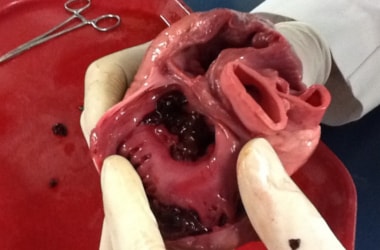
Harvard researchers along with scientists from Boston Children's Hospital have developed a customizable robotic heart sleeve that helps hearts to beat.
This opens up new treatment for heart failure patients.
Soft robotic sleeve twists and compresses in sync with a heart beat. This augments cardiovascular functions weakened by heart failure.
Current available devices that help heart beat directly come in contact with blood.
The soft robotic sleeve does not directly contact blood, lowering the risk of clotting.
It also eliminates the need for blood thinner medication. The latter can be dangerous.
Device can help patients transplant or aid in cardiac rehab and recovery.
This showcases the potential of soft robotics to meet clinical needs.
The inventor of the heart sleeve is Ellen T. Roche and her team.
The research, was a collaboration between Harvard, the Wyss Institute, and Boston Children’s Hospital.
It shows how soft robotics can safely interact with soft tissue and lead to improvements in cardiac function.
The thin silicone sleeve uses soft pneumatic actuators placed around the heart.
It mimics the outer muscle layers of the mammalian heart.
The actuators twist and compress the sleeve in a motion akin to the beating heart.
The device is tethered to an external pump. This uses air to power the soft actuators.
The sleeve can be customized for each patient, as his/her condition evolves.
The sleeve is attached to the heart using a combination of a suction device, sutures, and a gel interface.
This helps with friction between the device and the heart.
Heart Failure: Know More- Heart failure affects 41 million people worldwide.
- Today, some of the treatment options are mechanical pumps called ventricular assist devices (VADs).
- These pump blood from the ventricles into the aorta, and heart transplants.
- While VADs are continuously improving, patients are still at high risk for blood clots and stroke.